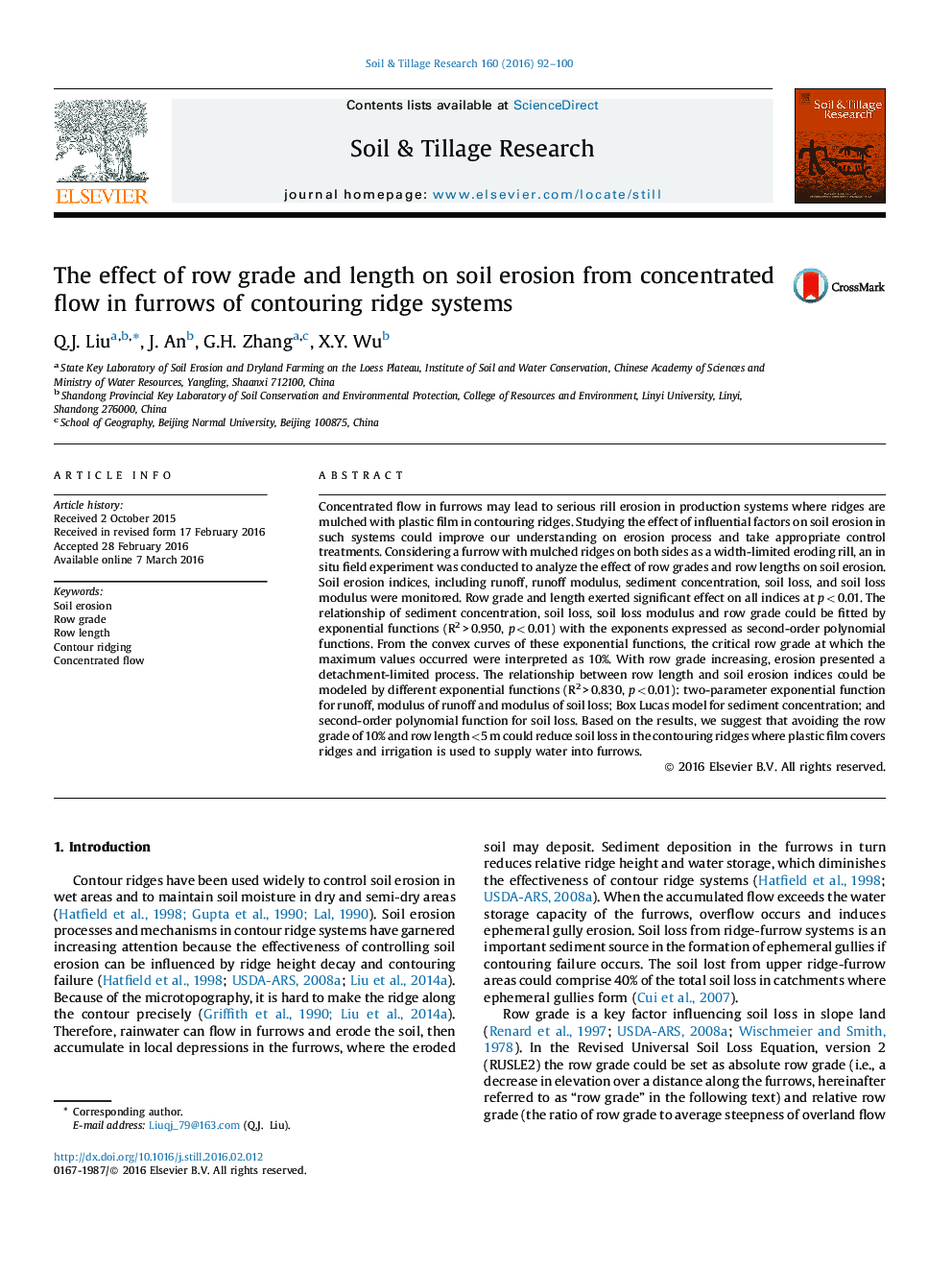| Article ID | Journal | Published Year | Pages | File Type |
|---|---|---|---|---|
| 305346 | Soil and Tillage Research | 2016 | 9 Pages |
•Exponential functions could model the effect of row grade and length on soil loss.•Row grade had more influence on soil loss than on runoff.•Row length had significant effect on soil loss and runoff.•The greatest soil loss occurred at row grade of 10% and row length of 5 m.
Concentrated flow in furrows may lead to serious rill erosion in production systems where ridges are mulched with plastic film in contouring ridges. Studying the effect of influential factors on soil erosion in such systems could improve our understanding on erosion process and take appropriate control treatments. Considering a furrow with mulched ridges on both sides as a width-limited eroding rill, an in situ field experiment was conducted to analyze the effect of row grades and row lengths on soil erosion. Soil erosion indices, including runoff, runoff modulus, sediment concentration, soil loss, and soil loss modulus were monitored. Row grade and length exerted significant effect on all indices at p < 0.01. The relationship of sediment concentration, soil loss, soil loss modulus and row grade could be fitted by exponential functions (R2 > 0.950, p < 0.01) with the exponents expressed as second-order polynomial functions. From the convex curves of these exponential functions, the critical row grade at which the maximum values occurred were interpreted as 10%. With row grade increasing, erosion presented a detachment-limited process. The relationship between row length and soil erosion indices could be modeled by different exponential functions (R2 > 0.830, p < 0.01): two-parameter exponential function for runoff, modulus of runoff and modulus of soil loss; Box Lucas model for sediment concentration; and second-order polynomial function for soil loss. Based on the results, we suggest that avoiding the row grade of 10% and row length <5 m could reduce soil loss in the contouring ridges where plastic film covers ridges and irrigation is used to supply water into furrows.
